2022 Digital News Report out now. A huge effort by an amazing team that I’m proud to be part of.
We cover 46 markets on six continents, accounting for more than half of the world’s population.
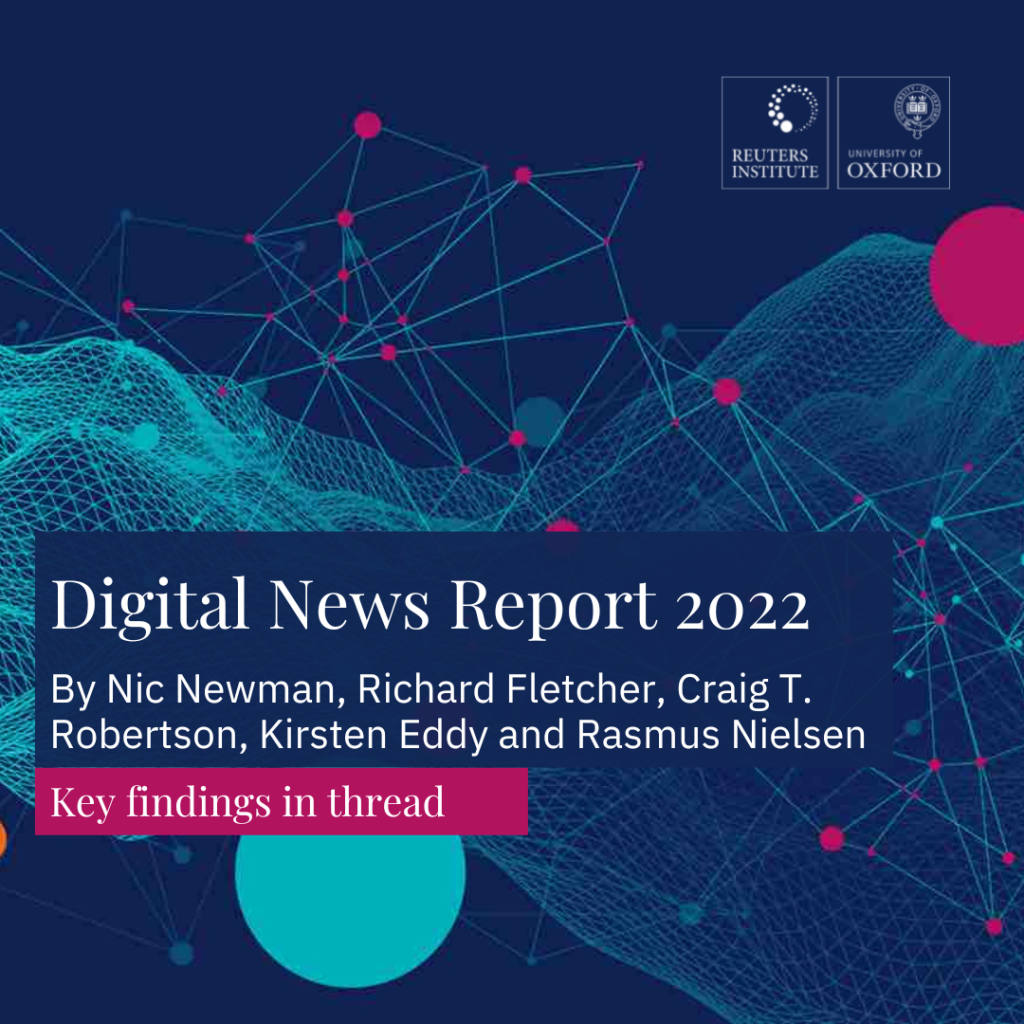
The full report is available here in HTML and here as a PDF.
We are using the hashtag #DNR22 for discussions on Twitter.
As I write in my foreword, we live in an age of extremes, also when it comes to some aspects of news and media use.
While many of the most commercially successful news media are doing well by primarily serving audiences that are, crudely put, like me – affluent, highly educated, privileged, in many countries predominantly male, middle-aged, and white – questions continue to mount around the connection between journalism and much of the public.
The purpose of our research at the Reuters Institute is to ensure that reporters, editors, and news media executives and others who care about the future of journalism can understand these trends and many others on the basis of reliable, robust, relevant research that can help inform how they – on the basis of their different ideals and interests – chose to adapt to a changing environment.
The Digital News Report is a key part of this.
Seven highlights from this year’s report below.
First, we find that a growing number of news media willing to embrace digital and able to offer distinct journalism in an incredibly competitive marketplace do well by doing good. But many struggle in an unforgiving winner-takes-most online environment, for example when it comes to subscriptions.
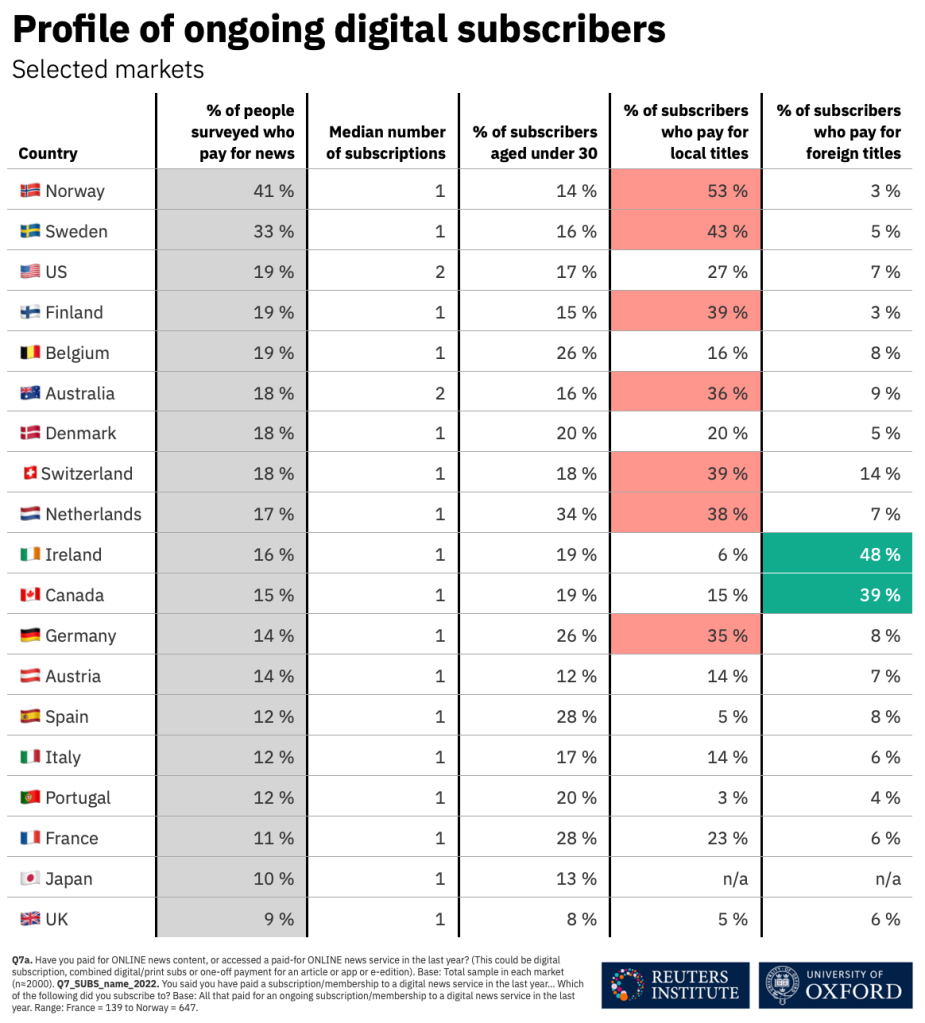
Second, while many commercially successful news media primarily serve audiences that are, crudely put, like me (affluent, highly educated, privileged etc) our findings document connection between journalism and much of the public is fraying. Interest and trust is down, news avoidance up.

Third, more broadly, in many countries much of the public question whether the news media are independent of undue political or government influence – even in very privileged countries, barely half say news media are independent of undue influence most of the time.

Fourth, these issues are compounded by differences in how new generations use media – looking specifically at those under 24 we find much less interest in connecting directly with news media, different views on what journalism ought to look like, much heavier reliance on newer forms of social media.

Fifth, across markets 54% say they worry about identifying the difference between what is real and fake on the internet when it comes to online news. More of those who say they mainly use social media as source of news (61%) are worried than among those who don’t use social at all (48%).
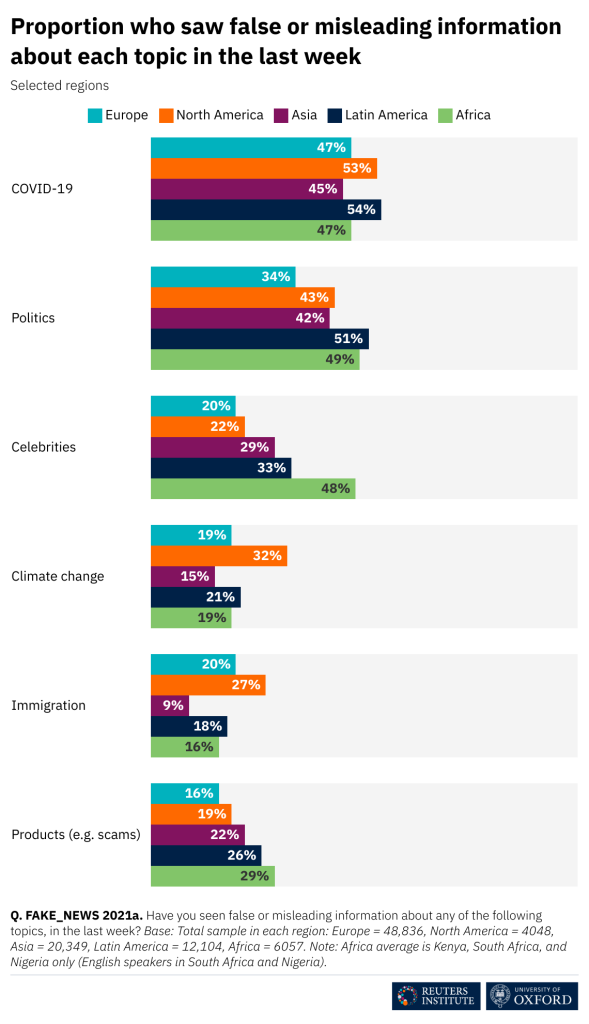
Sixth, despite these concerns, access to news continues to become more distributed. Across all markets, less than a quarter (23%) prefer to start their news journeys with a news site or app, down 9pp since 2018. Those aged 18–24 have an even weaker connection with news sites and apps.
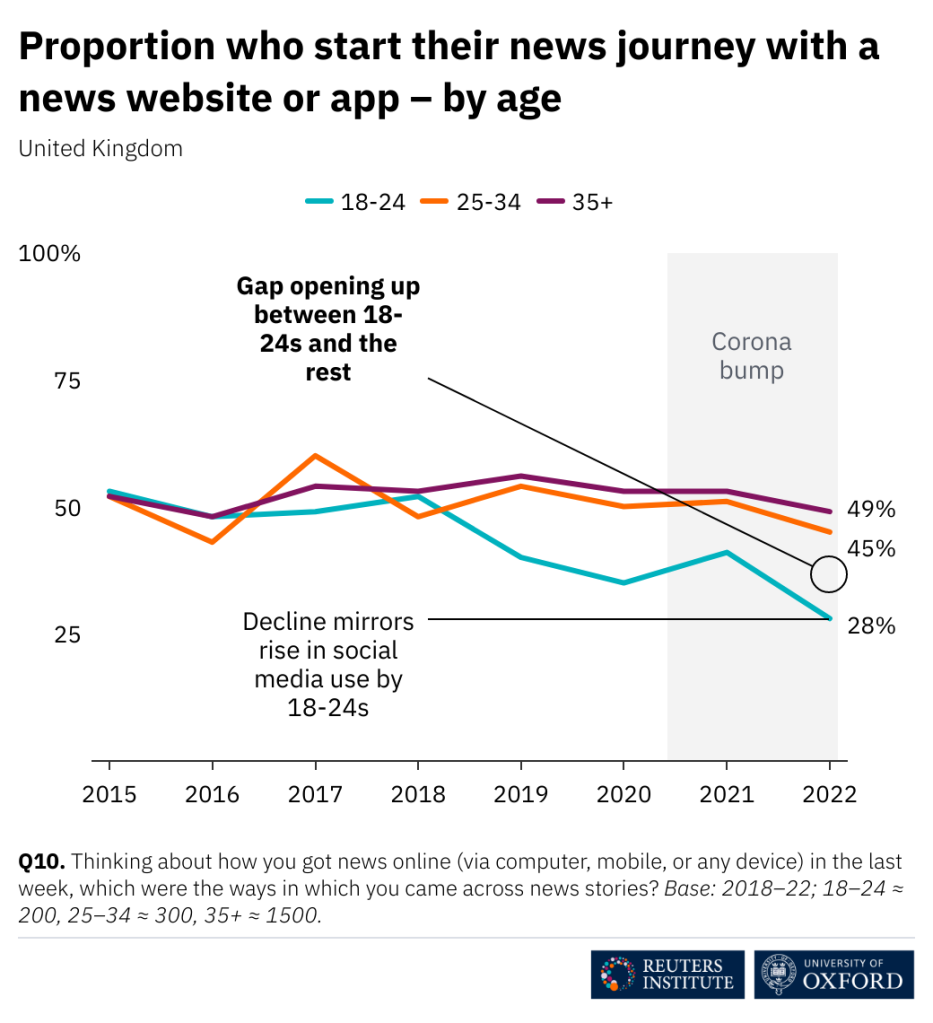
Seventh, as publishers, but also individual journalists, seek to reach people via social media, it is important to note that, in most countries, half or more of respondents feel that journalists on social should stick to reporting the news on social media (even as a sizable minority feel they should be allowed to express personal opinions).

Report lead author is Nic Newman, working with Richard Fletcher, Craig T. Robertson, Kirsten Eddy, and myself.
It is made possible by 18 sponsors, our amazing country partners, and the whole Reuters Institute team.
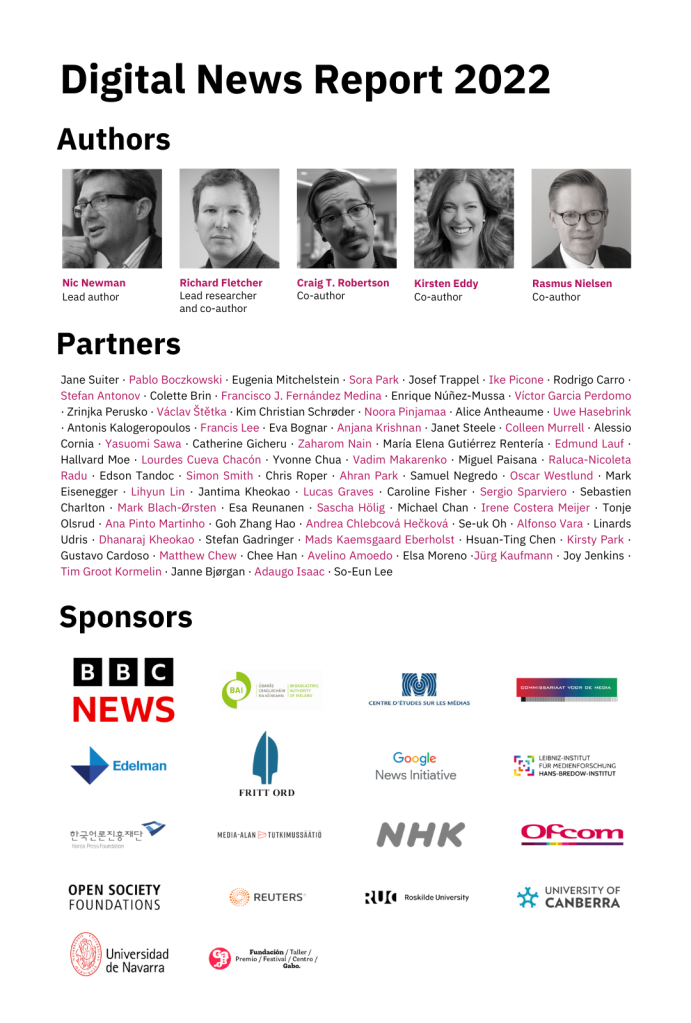
It takes a village and I’m so happy to be part of this particular one.
